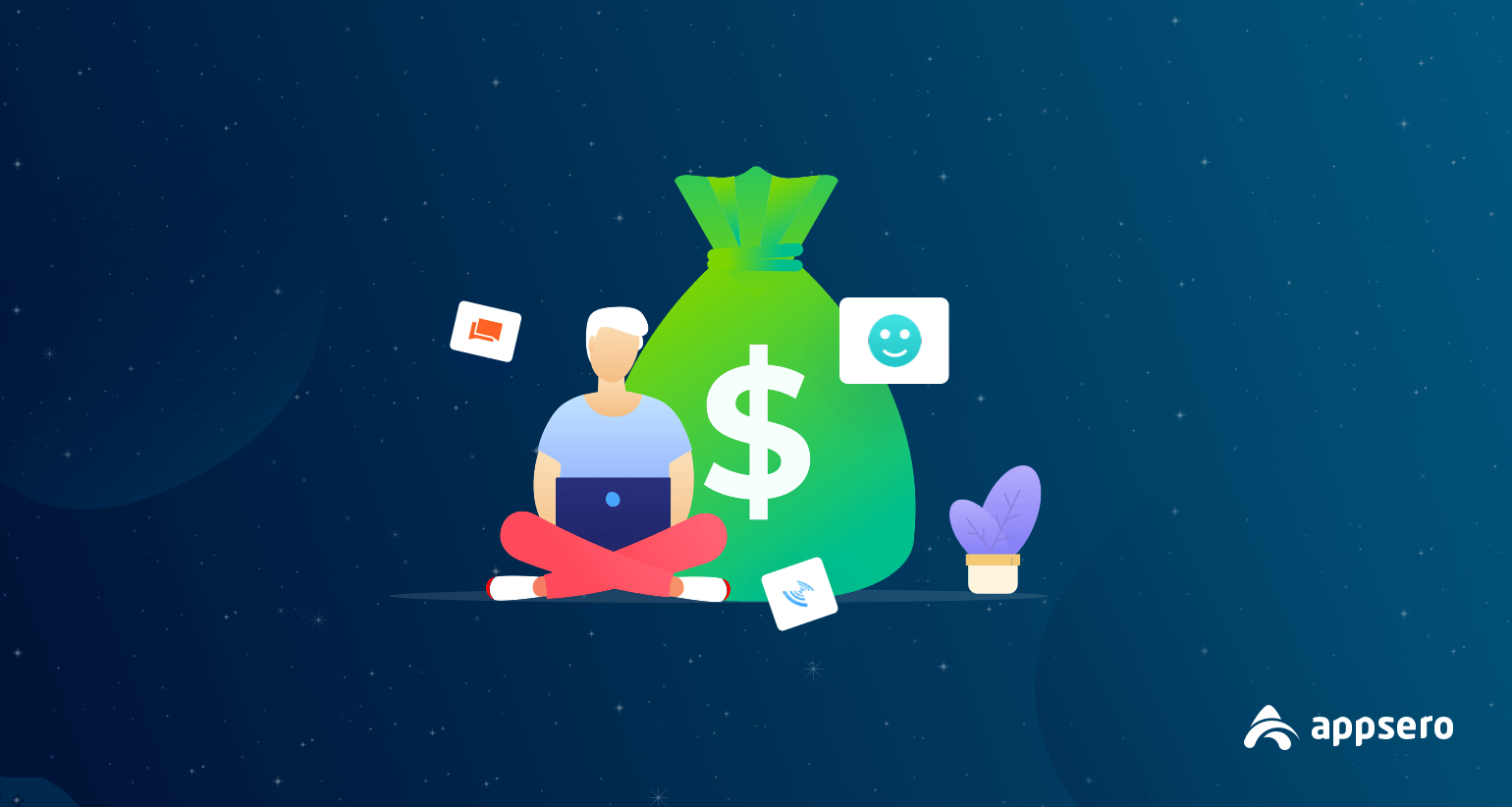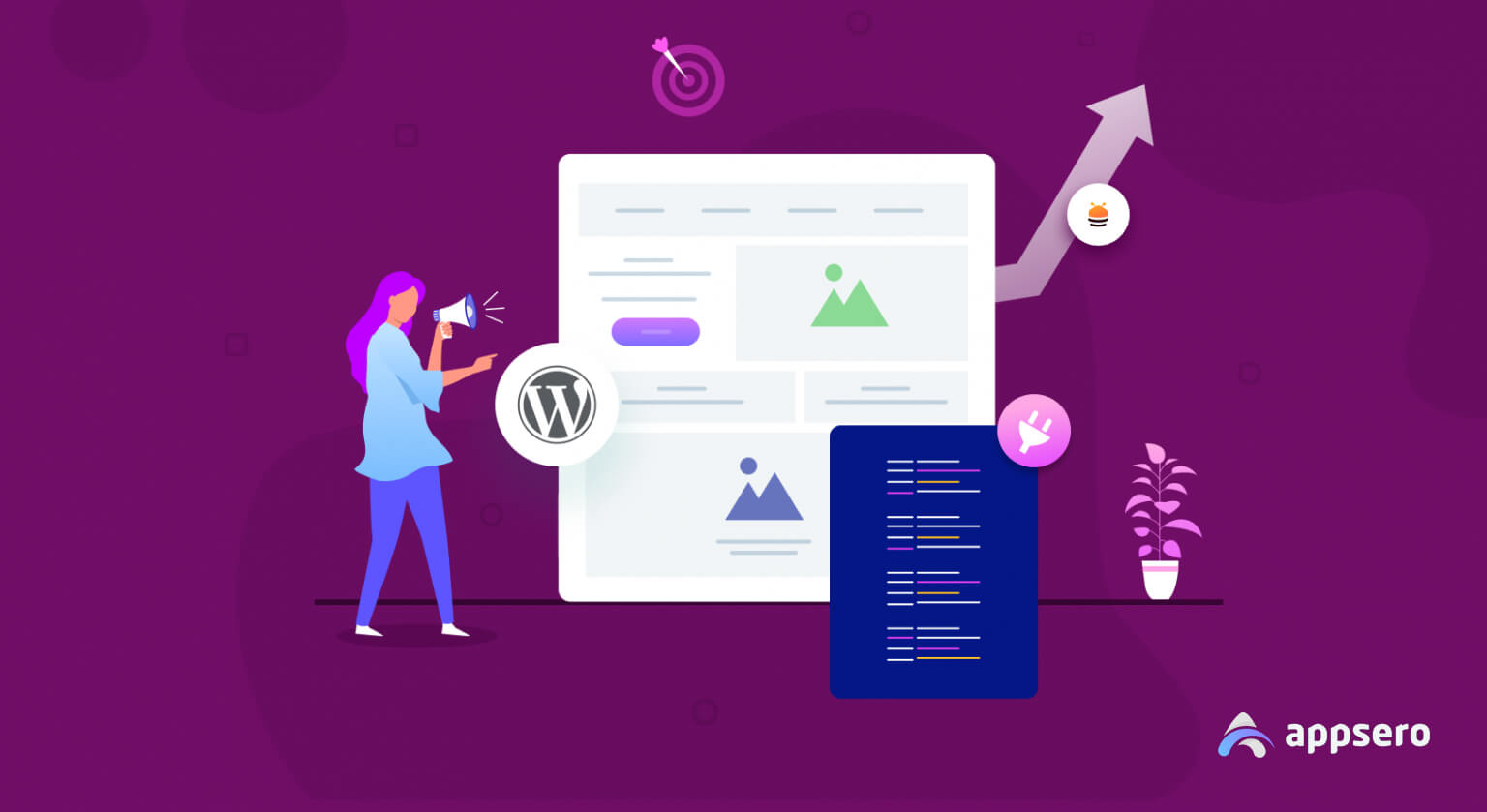
Freemium vs Premium Business Model: Choose the Right One for your WordPress Products
Stuck choosing between the freemium vs premium business model for your product? Should you offer a free tier to attract users or dive straight into a paid model? Both options have their pros and cons, and choosing the wrong one can feel like shooting yourself in the foot (metaphorically, of course!).
Don’t worry! We’ve addressed all the queries you might have about both freemium and premium models in this article. This detailed guide unveils the strengths and weaknesses of each model, guiding you to the perfect fit for your creation.
Understanding Freemium and Premium Business Models
Choosing between freemium and premium business models can significantly impact your success. That’s why understanding these models is crucial. Let’s explore the differences between freemium and premium models with simple definitions and examples.
What Is a Freemium Model?
The freemium model offers a basic version of a product for free, with the option to upgrade to a premium version for enhanced features or functionality.
Example: The “Yoast SEO” plugin for WordPress provides essential search engine optimization tools for free. However, users can upgrade to the premium version for advanced features like redirect management and internal linking suggestions.
What Is a Premium Model?
The premium model involves charging users upfront for access to a product’s full set of features and exclusive benefits.
Example: “WP Rocket” is a premium caching plugin for WordPress designed to improve website performance and speed. Users must purchase a license for access to the premium features. Pricing depends on how many websites you will use this plugin on and how much facility you want.
Key Characteristics of the Freemium Model

Usually, a freemium model comprises the following key features:
1. Pricing Structure
This pricing structure aims to attract users with a low barrier to entry while providing opportunities for revenue through premium upgrades.
2. User Acquisition
Freemium models focus on acquiring a large user base by offering the basic version of the product or service for free. By providing value to users at no cost, you can increase brand awareness, drive user adoption, and leverage network effects to expand your user base over time.
3. Monetization Strategy
The primary monetization strategy in the freemium model involves converting a percentage of free users into paying customers. You can offer additional features, enhanced functionality, or premium services as incentives for users to upgrade to a paid subscription or purchase premium versions of the product.
Also read: Software Monetization Strategies for WordPress Developers
4. Customer Engagement
Customer engagement is crucial in the freemium model to encourage usage of the free version and drive conversions to premium offerings. You need to invest in customer support, product updates, and community-building efforts to maintain user satisfaction that incentivizes users to upgrade.
5. Market Positioning
You should aim to establish yourself as a leader in the industry by offering a compelling free version of your product or service. By providing value upfront and positioning yourself as accessible and user-friendly, you can differentiate your company from competitors and attract a broader audience, including users who may eventually convert into paying customers.
Key Characteristics of Premium Model
Here are the major elements of a premium model:
1. Pricing Structure

The premium pricing structure emphasizes the value and quality of the offering, with users paying a premium price for enhanced functionality or superior features.
Also read: Tips on Creating a Pricing Page That Converts
2. User Acquisition
Premium models focus on acquiring users who are willing to pay for high-quality products or services. This often involves targeted marketing efforts to reach specific market segments. You need to emphasize the unique value proposition and benefits of the premium offering to attract paying customers.
3. Monetization Strategy
The primary monetization strategy in the premium model is to generate revenue directly from upfront sales. You should set premium prices based on the perceived value of the product or service. Aim to maximize revenue per user by providing comprehensive features and exclusive benefits that justify the higher price point.
4. Customer Engagement
Customer engagement in the premium model focuses on delivering exceptional experiences to reflect the upfront cost and maintain customer satisfaction with loyalty. You need to invest in high-quality customer support, personalized interactions, and continuous improvement to ensure that premium users receive value and feel satisfied with their investments.
5. Market Positioning
The premium model is about how a company establishes its brand as a provider of premium offerings. In this model, you need to emphasize the unique features, benefits, and exclusivity of products or services. You must create a perception of value and quality that justifies the higher price point and appeals to customers who prioritize excellence and are willing to invest in premium solutions.
Also read: How to Promote Your WordPress Plugins and Themes
Side-by-Side Comparison: Freemium vs Premium Business Models

Let’s put the freemium and premium business models together for a clear comparison. This will help you understand the differences and make informed decisions for your own products or services. Here’s a comparison table summarizing the key characteristics of the freemium and premium business models.
| Feature | Freemium Model | Premium Model |
|---|---|---|
| Pricing Structure | The basic version is free, with optional premium upgrades | Upfront payment for full access to premium features |
| User Acquisition | Focuses on acquiring a large user base through free offerings and upselling to premium features later | Targets users willing to pay for premium quality or exclusivity |
| Monetization Strategy | Revenue from premium upgrades after acquiring a large user base | Revenue generated directly from upfront sales |
| Customer Engagement | Focuses on engaging and retaining free users, encouraging upgrades | Emphasizes delivering exceptional customer experience to justify the upfront cost |
| Market Positioning | Establishes as leaders by offering a compelling free version, accessible and user-friendly | Distinguishes as providers of premium-quality products or services, targeting discerning customers |
Benefits and Challenges of Freemium and Premium Models
Here’s a breakdown of the benefits and challenges associated with both the freemium and premium business models:
Benefits of Freemium Model
Widened User Base: Offering a free version attracts a larger audience, increasing brand awareness and user acquisition.
Low Barrier to Entry: The free version lowers the barrier to entry for potential users, encouraging them to try the product without commitment.
Upselling Opportunities: Free users have the opportunity to experience the product or service firsthand, making them more likely to upgrade to premium features.
Flexibility: Companies can adjust their offerings and pricing tiers based on user feedback, market demand, and competitive landscape.
Challenges of Freemium Model
Monetization Uncertainty: Converting free users into paying customers can be challenging, leading to uncertainty about revenue sustainability.
Balancing Free and Premium Features: Finding the right balance between providing enough value in the free version and offering compelling premium features to incentivize upgrades.
Higher Customer Acquisition Costs: Acquiring a large user base can be costly, especially if a significant portion of users never convert to paying customers.
Support and Maintenance: Supporting a large user base, including free users, can be resource-intensive, requiring ongoing maintenance and customer support efforts.

Benefits of Premium Model
Immediate Revenue: Premium models generate revenue directly from upfront sales, providing immediate cash flow for the company.
Emphasis on Quality: Premium models emphasize delivering high-quality products or services, attracting customers willing to pay for superior offerings.
Clear Value Proposition: Premium pricing reinforces the perceived value and exclusivity of the product or service, enhancing brand reputation and customer loyalty.
Lower Customer Acquisition Costs: Targeting specific market segments reduces customer acquisition costs, as the focus is on quality over quantity.
Challenges of Premium Model
Limited Reach: Higher prices may limit the customer base to affluent or niche markets, reducing the potential for widespread adoption.
Higher Barrier to Entry: Premium pricing may deter potential customers who are unwilling or unable to pay the higher upfront cost.
Continuous Innovation Required: To justify premium pricing, companies must continuously innovate and deliver on their brand promise to maintain customer satisfaction and competitive advantage.
Market Differentiation: Standing out in a competitive market requires clear differentiation and value proposition, as customers expect premium offerings to justify their higher prices.
Understanding these benefits and challenges can help you make informed decisions when choosing between the freemium and premium business models. You need to align your pricing strategy with the target market, product offering, and overall business objectives.
4 Factors to Consider When Adopting a Pricing Model: Freemium vs Premium

Choosing the right pricing model can be the make-or-break decision for your venture’s success. In this section, we’ll explore factors to consider when choosing between freemium vs. premium. Read more to get guidance toward the model that best aligns with your specific product and business goals.
1. Product Type
Complexity: Freemium works well for easy-to-use products with clear value propositions. For complex products requiring user investment or training, a free trial might be a better option.
Value proposition: Can you clearly differentiate the free and premium tiers based on features and benefits? The premium features should be compelling enough to justify the cost.
2. Target Market
Size: Freemium requires a larger potential user base because the conversion rate from free to paid is typically lower.
Needs and preferences: Understand your target market’s willingness to pay and preference for free vs. paid options.
3. Business Goals
Revenue generation: If immediate revenue is crucial, a premium model is ideal. Freemium might take longer to become profitable due to its reliance on conversion rates.
User acquisition: If growing your user base is the main goal, freemium can attract a larger audience and potentially generate leads for future paid conversions.
4. Other Factors
Support costs: Providing support for free users can be expensive. Consider if your freemium model can sustain those costs.
Competitive landscape: Are competitors using freemium, premium, or other models? Analyze their success and adapt accordingly.
Long-term vision: Freemium can foster a network effect, where more users enhance the product’s value for everyone. Consider if this aligns with your long-term goals.
Freemium vs Premium – How Should You Pitch Your WordPress Plugin?

While we cannot definitively recommend a specific model for pitching your WordPress plugin, we can offer some guidance based on your goals and the plugin itself. If building a large user base and fostering community is crucial, freemium might be a good starting point.
However, if immediate revenue generation and greater control over your plugin’s development are your priorities, a premium model might be more suitable. Ultimately, the best approach depends on your unique circumstances.
Carefully analyzing your plugin’s value proposition, target audience, and business objectives will guide you toward the optimal choice. Once you choose a suitable business model, you need to sell the WordPress plugins the right way.
Freemium Model Strategies: Maximize Conversions and User Engagement
Freemium thrives on converting a portion of your free users into paying customers. Here are strategies specifically designed for the freemium model:
- Feature Gating: Offer valuable features only in the paid tier, creating a clear incentive for users to upgrade. However, ensure the free tier still provides enough value to keep users engaged.
- Usage Limits: Implement limitations for free users, such as storage quotas, data processing limits, or daily transaction caps. This nudges users towards the premium tier when their needs exceed the free limitations.
- Limited Support: Offer limited or delayed support for free users, while prioritizing paid users for faster and more comprehensive assistance. This subtly highlights the added benefits of premium access.
- In-App Purchases: Offer microtransactions within the free tier for specific features or one-time upgrades. This allows users to experience premium functionalities without committing to a full subscription.
- Freemium Tiers: Consider offering different free tiers with varying feature sets and limitations. This caters to users with diverse needs, potentially encouraging them to upgrade to access more features.
- Social Proof: Showcase testimonials, positive reviews, or usage statistics from premium users to demonstrate the value of the paid tier and influence free users towards conversion.
- Freemium to Premium Onboarding: Design a smooth and frictionless upgrade process to encourage free users to transition seamlessly to the premium tier when ready.
Note: The key to success in freemium is to balance free and premium features carefully. Provide enough value in the free tier to attract and retain users.
Premium Model Strategies: Enhance Value and Cultivate Loyalty

Premium models rely on delivering exceptional value to justify the price. Here are specific strategies to consider:
- Value-Based Pricing: Ensure your pricing accurately reflects the unique value proposition your premium product or service offers. Conduct market research and competitor analysis to set a competitive price that justifies the perceived value.
- Exclusive Features and Content: Offer exclusive features, content, or functionalities only available to premium users. This creates a sense of exclusivity and VIP treatment, motivating users to maintain their subscriptions.
- High-Touch Customer Support: Provide premium support options like prioritized responses, dedicated account managers, or exclusive access to support channels. This emphasizes the added value of being a premium customer.
- Community Building: Foster a premium user community through online forums, exclusive events, or dedicated communication channels. This creates a sense of belonging and exclusivity, enhancing user loyalty and satisfaction.
- Regular Updates and Enhancements: Continuously improve and update your premium product or service to showcase the ongoing value you deliver to justify the subscription cost.
- Free Trials and Money-Back Guarantees: Offer limited-time free trials or money-back guarantees to allow users to experience the product firsthand and reduce the perceived risk of subscribing.
- Reward Programs: Implement loyalty programs that reward users for their continued subscriptions. This could involve discounts, exclusive benefits, or tiered rewards based on subscription duration or spending.
Note: Building a successful premium model requires a commitment to delivering exceptional value, continuous improvement, and nurturing strong customer relationships. By focusing on these strategies, you can cultivate loyal customers who find your premium offerings well worth the investment.
How Appsero Empowers You, Regardless of Your Pricing Model
Whether you choose the freemium or premium route, Appsero can be your friend in navigating the complexities of WordPress plugin development and marketing. Its comprehensive analytics provide deep insights into user behavior within your products. You can analyze feature usage, identify popular functionalities, and understand user needs.
You can also use Appsero’s built-in feedback tools available as deactivation autoresponders. Gather valuable user suggestions and bug reports, actively engage with your users, and demonstrate your commitment to continuous improvement.
Once you know what the users are thinking of your products, you can prioritize feature development based on user feedback and usage data collected through Appsero.
Subscribe To Our Newsletter
Don’t miss any updates of our new templates and extensions
and all the astonishing offers we bring for you.
